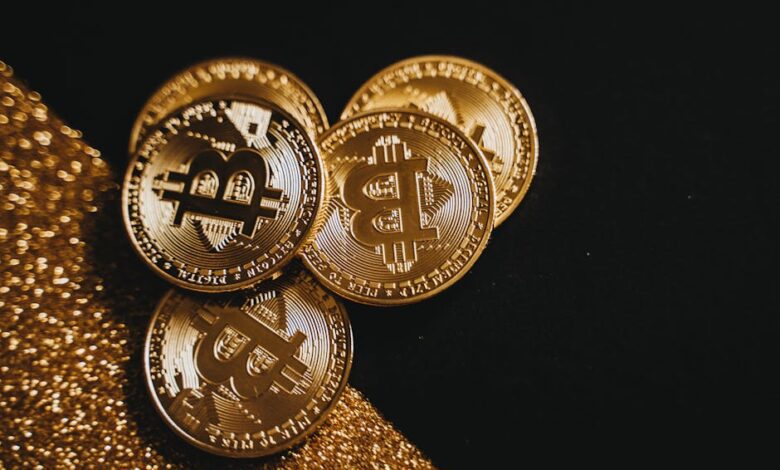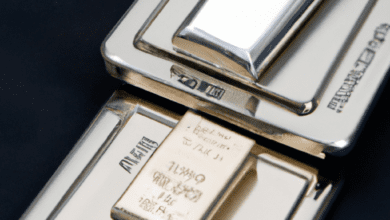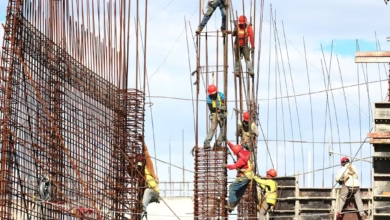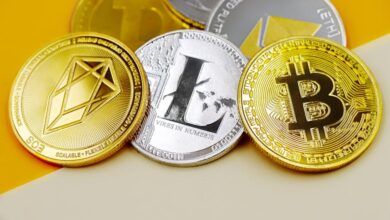Metals and Markets: Navigating the Interplay of Industrial Demand, Investment Trends, and Economic Indicators

In an increasingly interconnected and dynamic global economy, the significance of metals extends far beyond their traditional uses. From the glittering allure of precious metals like silver and platinum to the critical roles played by industrial metals such as copper and aluminum, these resources are integral to both our daily lives and investment strategies. This article delves into the multifaceted role of metals in today's markets, exploring how silver serves dual purposes in industrial applications and as a coveted investment. We will examine the fluctuations in copper prices as reflections of economic health, the surging demand for rare earth metals driven by green energy technologies, and the ongoing debate between platinum and palladium as investment vehicles. Additionally, we will analyze how inflation influences the pricing of both precious and industrial metals, the future of aluminum in sustainable practices, and the implications of mining regulations on metal prices. By understanding these dynamics, investors and industry stakeholders can better navigate the complex landscape of metal markets and make informed decisions for a balanced portfolio.
- 1. **Silver's Dual Role: Industrial Applications and Investment Opportunities**
- 2. **Copper Prices as Economic Barometers: Understanding Global Trends**
1. **Silver's Dual Role: Industrial Applications and Investment Opportunities**
Silver plays a unique and significant role in both industrial applications and investment opportunities, making it a versatile asset in the global market. On the industrial side, silver is renowned for its exceptional conductivity, thermal properties, and antibacterial qualities. These attributes have led to its widespread use in electronics, solar energy systems, medical devices, and various chemical processes. The demand for silver in the photovoltaic industry, driven by the global push for renewable energy, has seen notable increases as countries strive to meet sustainability targets.
Conversely, silver also serves as a safe-haven investment, often sought after during periods of economic uncertainty. Investors view silver as a hedge against inflation and currency fluctuations, similar to gold. Its relatively lower price compared to gold allows a broader range of investors to participate in the precious metals market. The dual nature of silver—functioning both as a vital industrial commodity and a financial asset—creates a dynamic interplay between its supply and demand in these sectors.
As the world increasingly shifts towards green technologies, the interplay between silver's industrial use and its investment appeal is expected to intensify. This trend could lead to volatility in silver prices, influenced by both technological advancements and macroeconomic factors. Investors who recognize the potential of silver in various industries may find opportunities for growth, while industrial users must navigate the complexities of market fluctuations. Overall, silver's dual role enhances its significance in both industrial and investment landscapes.
Silver plays a multifaceted role in both industrial and investment markets. As a precious metal, it is often viewed as a safe haven asset, similar to gold, particularly during times of economic uncertainty. Investors typically turn to silver to hedge against inflation and currency devaluation. The metal's historical significance as a store of value contributes to its appeal, making it a popular choice for both individual and institutional investors looking to diversify their portfolios.
In addition to its investment appeal, silver has extensive industrial applications. It is a key component in electronics, solar panels, and medical devices due to its excellent conductivity and antibacterial properties. The increasing adoption of green technologies, such as photovoltaic cells in solar energy systems, is driving up silver demand, creating a potential synergy between its roles as an industrial input and an investment asset.
Meanwhile, copper prices serve as a barometer for global economic health. As a fundamental component in construction, electrical wiring, and various industrial applications, fluctuations in copper prices often reflect changes in economic activity. A rise in copper prices may indicate robust demand driven by infrastructure development and manufacturing growth, while a decline could signal economic slowdown or reduced industrial output.
The demand for rare earth metals is significantly impacted by the transition to green energy technologies. These metals are crucial in manufacturing components for electric vehicles (EVs), wind turbines, and energy-efficient appliances. The ongoing shift towards sustainable energy solutions is likely to increase the demand for these metals, which could lead to supply constraints and rising prices, further emphasizing the importance of responsible sourcing and recycling initiatives.
When considering platinum versus palladium as investment options, investors must evaluate several factors, including market supply, demand dynamics, and industrial use cases. Platinum is often employed in catalytic converters, jewelry, and investment coins, while palladium has gained traction in automotive applications due to its efficiency in reducing emissions. Both metals have their unique investment merits, but recent trends have shown palladium prices soaring due to tighter emissions regulations, making it a more attractive option in the short term.
Inflation impacts the prices of both precious and industrial metals. Historically, metals are seen as a hedge against inflation, as rising prices of goods and services often lead to increased demand for tangible assets like gold, silver, and platinum. Conversely, industrial metals may experience price fluctuations based on supply chain dynamics and production costs, which can be influenced by inflationary pressures.
Aluminum also plays a vital role in the transition to a sustainable economy. Its lightweight properties make it an ideal choice for energy-efficient vehicles and packaging solutions. The demand for aluminum is expected to rise as industries focus on reducing carbon footprints and enhancing recyclability.
Lastly, mining regulations significantly impact metal prices. Stricter regulations can lead to increased production costs and potential supply shortages, driving prices higher. Conversely, regulatory incentives aimed at promoting sustainable mining practices can stabilize supply and encourage investment in the sector, ultimately influencing market dynamics.
In summary, the interplay between industrial demand, investment trends, and regulatory frameworks shapes the landscape of metal markets. Understanding these relationships is essential for investors and stakeholders looking to navigate the complexities of the commodities market effectively.
2. **Copper Prices as Economic Barometers: Understanding Global Trends**
Copper prices serve as a critical indicator of global economic health, often referred to as "Dr. Copper" due to its ability to predict economic trends. This metal is extensively used across various industries, including construction, electronics, and manufacturing, making its demand closely tied to economic activity. When economies are thriving, the demand for copper typically increases, resulting in higher prices. Conversely, during economic downturns, reduced industrial activity leads to lower copper prices.
Several factors contribute to the fluctuations in copper prices, including supply chain dynamics, geopolitical events, and currency fluctuations. For instance, disruptions in major copper-producing countries, such as Chile and Peru, can significantly impact global supply and, consequently, prices. Additionally, the strength of the U.S. dollar often inversely affects copper prices; a stronger dollar typically makes copper more expensive for foreign buyers, potentially dampening demand.
The rise of emerging markets, particularly in Asia, has further intensified copper's role as an economic barometer. Rapid urbanization and infrastructure development in countries like China and India have driven substantial demand for copper, influencing global prices. As these economies continue to grow, their consumption patterns will likely shape copper market dynamics.
Moreover, trends in technology and sustainability are also impacting copper demand. The shift towards electric vehicles and renewable energy sources relies heavily on copper for wiring and components, suggesting that future price movements will increasingly reflect advancements in these sectors. As such, monitoring copper prices provides valuable insights into broader economic conditions and emerging market trends, making it an essential component for investors and analysts alike.
In conclusion, the complex interplay between metals and economic dynamics underscores their significance in both industrial applications and investment strategies. Silver, with its dual role as a critical component in various technologies and a sought-after investment asset, highlights the importance of understanding market trends and demands. Similarly, copper prices serve as reliable indicators of global economic health, reflecting broader trends that can impact investment decisions.
As the push for sustainable practices intensifies, the demand for rare earth metals is expected to rise, driven by the advancement of green technologies. In the realm of precious metals, the ongoing debate between platinum and palladium as investment options illustrates the nuances of market preferences and economic factors. Furthermore, incorporating metals into diversified investment portfolios can offer a hedge against inflation, which has been shown to influence prices across the board.
The future of aluminum appears promising in a sustainable economy, particularly as industries seek lightweight and recyclable alternatives. However, mining regulations will continue to play a crucial role in shaping metal prices, impacting both supply and investment opportunities.
As we move forward, staying informed about these trends and understanding the multifaceted roles of various metals will be essential for investors and industries alike, ensuring strategic decisions that align with both economic realities and sustainable practices.





